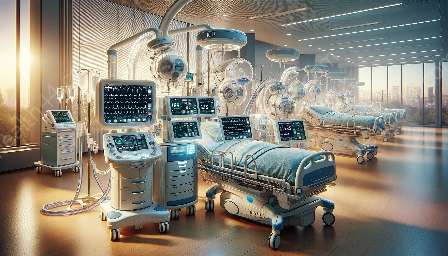Phacoemulsification systems play a crucial role in modern ophthalmic surgery, offering advanced technology for cataract removal and lens implantation. These innovative medical devices are compatible with life support systems and are a part of the broader landscape of medical devices and equipment in healthcare.
Understanding Phacoemulsification Systems
Phacoemulsification is a state-of-the-art surgical method used for the removal of cataracts. It involves the emulsification of the cataract by ultrasound and its removal from the eye, followed by the insertion of an intraocular lens. The development of phacoemulsification systems has transformed cataract surgery, making it safer and more efficient than traditional methods.
Phacoemulsification systems consist of various components, including the phaco machine, ultrasound handpiece, fluidics management system, and advanced imaging technology. These elements work together to provide surgeons with precise control and real-time visualization during the surgical procedure, resulting in improved outcomes for patients.
Key Features and Benefits
The integration of advanced technology into phacoemulsification systems has led to several key features and benefits:
- Microincision Surgery: Phacoemulsification systems enable microincision cataract surgery, minimizing trauma to the eye and accelerating post-operative recovery.
- Ultrasound Technology: The use of ultrasound energy allows for the precise emulsification of cataracts, reducing the risk of complications and enhancing surgical precision.
- Fluidics Management: Advanced fluidics systems in phacoemulsification help maintain stable anterior chamber depth and intraocular pressure, optimizing the surgical environment.
- Image-Guided Surgery: Integrated imaging technology assists surgeons in visualizing the eye's anatomy and monitoring the progress of the surgical procedure in real time.
Compatibility with Life Support Systems
While phacoemulsification systems are primarily utilized in ophthalmic surgery, their compatibility with life support systems is essential in ensuring seamless integration within the broader medical infrastructure. The electrical and functional compatibility of phacoemulsification machines with life support systems adheres to stringent safety standards, allowing for their operation in various clinical settings.
Moreover, the efficient use of power and resources by phacoemulsification systems aligns with the sustainable and cost-effective operation of medical facilities, complementing the broader framework of life support systems.
Integration Into Medical Devices & Equipment Landscape
As part of the broader landscape of medical devices and equipment, phacoemulsification systems contribute to the advancement of ophthalmic care and surgical technology. Their integration with imaging systems, sterilization equipment, and surgical instrumentation reflects their role in enhancing the overall infrastructure of healthcare facilities.
Furthermore, the ongoing innovation in phacoemulsification technology contributes to the development of interoperable medical devices and equipment, fostering seamless communication and data exchange within the healthcare environment.
Conclusion
Phacoemulsification systems represent a pinnacle of technological progress in ophthalmic surgery, offering unparalleled precision and safety in cataract removal and lens implantation. Their compatibility with life support systems and contribution to the broader landscape of medical devices and equipment underscore their integral role in modern healthcare.


